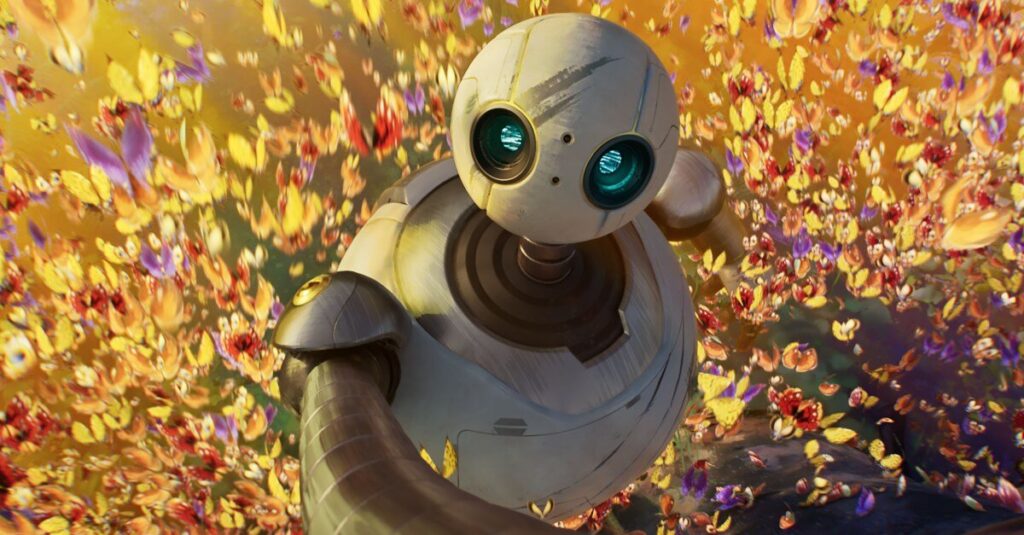When acclaimed co-director Chris Sanders, known for his work on “Lilo & Stitch” and “How to Train Your Dragon,” visited DreamWorks to explore their upcoming projects, he was instantly drawn to “The Wild Robot.” This adaptation of Peter Brown’s middle-grade book series tells the compelling story of Roz, a robot who finds herself in the wilderness, forming a heartfelt bond with an orphaned gosling.
For Sanders, the project’s allure lay in its subtlety and emotional depth. “Sometimes when I encounter a property like this, I get genuinely anxious because I feel so certain about what needs to be done,” Sanders shared with Polygon. His enthusiasm paid off. As computer technology has advanced to emulate the beauty of hand-drawn animation, Sanders could finally bring his vision for “The Wild Robot” to life. Early trailers already hint at a visually lush and unique production, arousing eager anticipation for its late-September release.
The experience Sanders gained from his previous films, particularly “How to Train Your Dragon,” prepared him for this endeavor. Reflecting on his past work, he explained how dissecting and reconstructing narratives helps in creating structurally sound stories before fine-tuning characters and personal touches. This meticulous approach was invaluable for “The Wild Robot.”
Brown, the original author, played a significant but remote role due to personal commitments. Yet, a key theme from their initial conversation—kindness as a survival skill—profoundly influenced the screenplay. Ensuring this theme translated smoothly into the movie was vital for Sanders.
Striking a balance between child-friendly content and a narrative meaningful to adults is a challenge Sanders has embraced since his early days in animation. “You work not to exclude any audience,” he noted, leveraging his experience to weave complex themes like motherhood into the storyline in an engaging manner.
Roz, the central character, presented unique challenges. Her quest to find a purpose initially seemed monotonous, but the film’s team worked hard to keep her journey compelling and imbued with emotional depth. Sanders made deliberate choices to minimize supporting characters from the book, ensuring the film’s pace matched the evocative tone of the novel while avoiding overcrowded storylines.
The casting significantly influenced the film’s development. Catherine O’Hara’s fresh take on Pinktail the possum and Lupita Nyong’o’s nuanced portrayal of Roz added new layers to their characters. Nyong’o’s demanding role required her voice to convey all the emotional intricacies of Roz’s character evolution.
Sanders drew inspiration from classic robot characters, notably C-3PO, R2-D2, and the Iron Giant, aiming for strong, memorable designs. DreamWorks’ artist Hyun Huh brought Roz’s character to life with a simple yet appealing design that stayed true to Brown’s depiction.
Technological advancements allowed the team to achieve a distinct visual style, avoiding traditional CG textures and opting for a hand-painted aesthetic. According to Sanders, this approach gave the film an impressionistic vibe, reminiscent of animation classics like “Bambi” and “My Neighbor Totoro.”
This milestone in animation, akin to the transformative effect of films like “Spider-Man: Into the Spider-Verse,” underscores the industry’s evolving landscape. DreamWorks’ flexible approach to animation styles, as Sanders experienced upon his return, allows for such groundbreaking work.
Reflecting on his career, Sanders emphasized the invaluable lessons from past projects, particularly the power of music in storytelling. “The Wild Robot” benefits from these lessons, featuring a soundtrack by Kris Bowers that enhances its emotional narrative.
Looking forward, Sanders envisions animation continuing to push boundaries, tackling diverse stories and exploring new styles. He celebrates the current success of animated films, believing they deserve recognition as some of the year’s best cinematic works.
“The Wild Robot” promises to be a pioneering film in computer animation, set to captivate audiences when it hits theaters on September 27.


